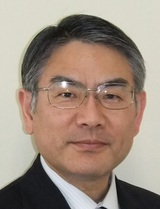
Kawamura, Shozo
| Affiliation | Department of Mechanical Engineering |
|---|---|
| Title | Professor |
| Fields of Research | Mechanical Vibration / Computational Engineering |
| Degree | Doctor of Engineering (Nagoya University) |
| Academic Societies | Department of Mechanical Engineering |
| kawamura@me Please append ".tut.ac.jp" to the end of the address above. |
|
| Laboratory website URL | http://dynaweb.me.tut.ac.jp |
| Researcher information URL(researchmap) | Researcher information |
Research
We conduct education and research related to modeling, analysis, and design of artificial objects such as machines, equipment, structures, sports equipment, and body movements.
At this time, we are paying attention to dynamic behavior such as vibration and movement of the object.
Theme 1:Identification of dynamic properties of artificial objects (Experimental modal analysis)
Theme 2:Seismic isolation and structural health monitoring for artificial objects
Theme 3:Sports engineering and human dynamics
Theme1:Identification of dynamic properties of artificial objects (Experimental modal analysis)
Overview
In order to create high-performance machines, devices, and structures, it is necessary to predict the vibrations that occur during operation or when external force is applied with high accuracy at the design stage. Recent advances in CAE technology have made it possible to predict vibration phenomena from CAD data with considerable accuracy, but further improvement in prediction accuracy is required.
In an actual machine, a member with a complicated shape is used, but when performing analysis with CAE, the dynamic characteristics obtained from a test piece with a simple shape are used. By clarifying the effect of shape processing on dynamic characteristics (especially damping characteristics), it becomes possible to use the dynamic characteristics of simple shapes as the dynamic characteristics of actual shapes. Furthermore, even when identifying the dynamic characteristics of a test piece with a simple shape, it is originally desirable to have a free support state, but in reality it cannot be measured without some support. Therefore, we are developing an experimental modal analysis method that considers the support conditions. In our reserches, we use our original experimental modal analysis method, Linear Fit Method.
Selected publications and works
Shozo Kawamura, Masato Kita, Masami Matsubara, Tomohiko Ise, Study of the effect of specimen size and frequency on the structural damping property of beam, Mechanical Engineering Journal, Vol.3 (2016), No.6, Paper No.16-00446.
Keywords
Theme2:Seismic isolation and structural health monitoring for artificial objects
Overview
Currently, various types of seismic isolation devices have been developed, but most of them are targeted for short-period ground motions and have a natural period of 1 to 5 seconds. The long-period ground motion, which has recently received a lot of attention, contains a periodic component that is very close to its natural period, so there is a problem that the seismic isolation table resonates. Therefore, we propose a seismic isolation system as follows. When a long-period ground motion acts on a seismic isolation device designed for short-period ground motion and the vibration amplitude of the seismic isolation table increases, a restoring element is added to the seismic isolation table to increase the natural frequency. We are also developing a system that suppresses resonance due to long-period ground motion by using a pendulum type dynamic vibration absorber. In addition, as an application of dynamic vibration absorbers, we are also conducting research on the optimal design when installing multiple dynamic vibration absorbers in a multi-degree-of-freedom system or a continuous system.
Even if the machine is built correctly according to the design, if something goes wrong during operation, unexpected vibration may appear, resulting in damage to the machine. Therefore, it is important to diagnose the cause of the abnormality using the measured vibration information when an abnormality occurs. Here, we focus on model-based diagnosis, which builds a mathematical model of the machine to be diagnosed in advance and makes a diagnosis based on it. In order to make such a diagnosis, it is necessary to identify the external force acting on the object, and we have proposed various identification methods. In the case of a layered structure, we are proposing a method to identify the fault occurrence layer by measuring the strain of the wall and a method to evaluate the soundness based on the frequency response function of the structure.
Selected publications and works
Shozo Kawamura, Sho Miyagi, Tomohiko Ise, Masami Matsubara, Structural health monitoring of layered structure by strain measurements, Mechanical Engineering Journal, Vol.6 (2019), No.1, Paper No.18-00390.
Keywords
Theme3:Sports engineering and human dynamics
Overview
Taking running as an example of sports movement, we are conducting research on human and sports environment.
In order to prevent runners' obstacles and improve their performance, we are studying the differences between the rear foot strike method and the fore foot strike one, and the differences in behavior when the track conditions change.
We also pay attention to sports surfaces. In addition to providing high performance for the player, sports surface plays a role in protecting the player from injuries and obstacles. In particular, we are studying human-friendly running paths to prevent runners' obstacles. Specifically, we are identifying the mathematical model of the surface from vertical and horizontal two-way impact tests for urethane runs and long pile artificial turf.
Keywords
Title of class
Vibration Engineering / Advanced Mechanical Systems

